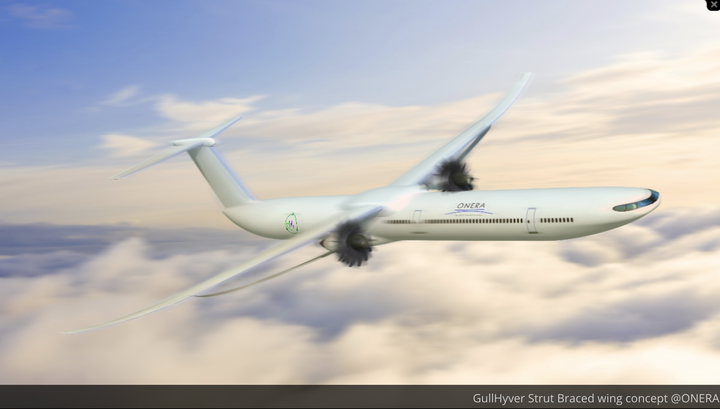AWATAR

AWATAR - Advanced Wing MATuration And integRation.
The aeronautical industry is committed to a collective goal of net-zero carbon emissions by 2050. In addition to optimized flight operations and Sustainable Aviation Fuels deployment, two fundamental enablers to reach this target are the introduction of LH2 technologies and new solutions increasing aircraft and engine efficiency. In order to accelerate the Entry Into Service of ultra-efficient hydrogen SMR aircraft, AWATAR develops a Very High Aspect Ratio, Strut-Braced, Dry-Wing characterized by laminar portions in the outer areas, advanced integrated leading edge systems and an optimized integration of an open-rotor propulsion system. With the purpose of anticipating and accelerating future certification processes, the targeted maturation relies on high-fidelity simulations and ground tests (ETW, S2MA, Collins’ Icing wind tunnel).
In terms of performance benefits, progress to be made in AWATAR leads to substantial gains with respect to a 2020 state-of-the-art aircraft. The novel aerodynamic configuration with a large aspect ratio targets a drag reduction at aircraft level of 18%. Regarding the Advanced Leading Edge solution integrating the ice protection system, the investigated technology aims for a 50% reduction of the energy budget needed for a fully evaporative system. For laminarity, the expected aircraft drag reduction is about 5-10% depending on the configuration. In addition, the optimized integration of the Unducted Single Fan limits installation drag to less than 4% of total aircraft drag. Overall, AWATAR aims at an integrated SMR aircraft (250 passengers - 2000 nm) offering an 18% reduction in block energy. This 36 months, 20MEuros valued project (14MEuros funding) relies on a strong consortium made of 2 Aircraft manufacturers, 1 Aerospace components supplier, 3 research Centers, 1 Wind tunnel Operator and 2 universities. This complementary and multidisciplinary consortium ensures that AWATAR maturity path is in line with Clean Aviation SMR roadmap.
Our main contribution to this project is a control co-design optimization framework aiming for gust load alleviation and weight reduction.